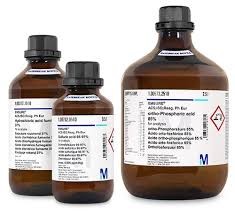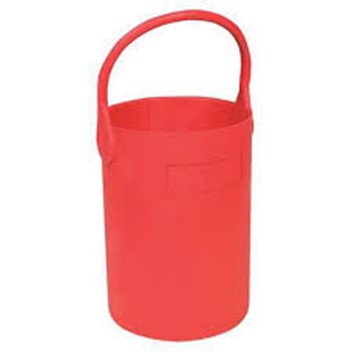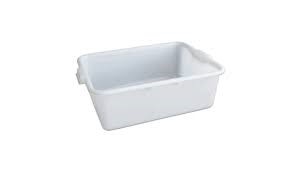- Always segregate and store chemicals according to compatibility and hazard classes. See Appendix B Chemical Segregation for recommendations.
- Do not store acids in flammable liquid storage cabinets. The exceptions are organic acids, such as Acetic acid, Lactic acid, and Formic acid, which are considered flammable/combustible and corrosive and can be stored in flammable or corrosive storage cabinets.
- Do not store flammable liquids in standard refrigerators or freezers. Due to the potential explosion hazard, only store flammables in units approved by the manufacturer for storage of flammables.
- Do not store hazardous materials above eye level. Storing glass containers and heavy materials on lower shelves is also recommended.
- All chemical containers must be labeled. Labels should include the name of the chemical and the hazards the chemical presents to the user.
- Be sure to check chemical containers regularly and replace any labels that are deteriorating or falling off and/or relabel with another label before the chemical becomes an unknown.
- Keep all chemical containers closed when not in use.
- Every chemical should have an identifiable storage place and should be returned to that location after use.
- The storage of chemicals on bench tops should be kept to a minimum to prevent clutter and possible spills
- Chemical storage in fume hoods should be kept to a minimum. Excess storage in hoods can interfere with airflow, reduce working space, and increase the risk of a spill, fire, or explosion.
- Chemicals should not be stored on the floor due to the potential for spills. If it is necessary to store bottles on the floor, then the container should be placed in secondary containment away from aisle spaces.
- Do not store chemicals in direct sunlight or next to heat sources.
- Laboratories should keep only the minimum quantity of chemicals necessary.
- Chemical containers should be dated when they arrive and should be checked regularly and disposed of when they get past their expiration date.
- Stored chemicals should be periodically inspected for deterioration and container integrity. Chemicals which are no longer used in the laboratory shall be discarded by labeling it with a chemical waste tag. Request a hazardous waste pickup.
Chemicals should NOT be stored alphabetically, however most labs store chemicals this way. However, this does not separate chemicals based on hazards. One suggested way to separate based on hazards is described here by UC Riverside. They can still be stored alphabetically but within the same hazard category.
Secondary Containers
A primary container is the one in which the material was received from the manufacturer. A secondary container is a container in which a chemical or chemical product is transferred or the container in which a new chemical product/reagent is made and stored. A secondary container is also a container in which waste carboys or other chemicals containers are stored for chemical containment. Examples of a primary container and secondary containers are below.
Secondary containers should be large enough that in the event of a break or spill, it can contain the entire amount in the broken or spilled chemical container. Flammable liquids, corrosive liquids, and all waste should be stored in a secondary container. Make sure that the container being used as storage or secondary containment is compatible with the chemical (e.g., hydrofluoric acid cannot be stored in glass containers since it reacts with glass).
For more information on transportation of chemicals, see Transportation of Chemicals section
Primary container

Secondary container used for transporting chemicals

Secondary container used to store other chemical containers or waste containers

Maximum Allowable Quantities
Maximum Allowable Quantities (MAQs) are the maximum amount of hazardous materials allowed to be stored or used within a control area in a building. A control area is a building or portion of a building or outdoor area within which hazardous materials are allowed to be stored, dispensed, used, or handled in quantities not exceeding the MAQ. The MAQs are intended to ensure the quantities of hazardous materials in a building are within the safe operating levels for the fire and life safety elements to which the building is designed and operated. Adhering to these limits is essential for ensuring a building is safe for its occupants and first responders. For more information on MAQs, see NFPA 400.
Determining MAQs is complex and relies on several structural and operational factors. The most common factors that determine MAQ:
- Which floor is your lab located,
- Whether a fire sprinkler system is installed throughout the building,
- And use of approved storage cabinets.
You can use this chart from the NFPA to determine the MAQs per control area and this example to understand how to use the chart. MAQs will be checked by the Chemical Hygiene Officer during annual audits. The PI and/or Laboratory Supervisor is responsible for ensuring that the laboratory is compliant within their MAQ.